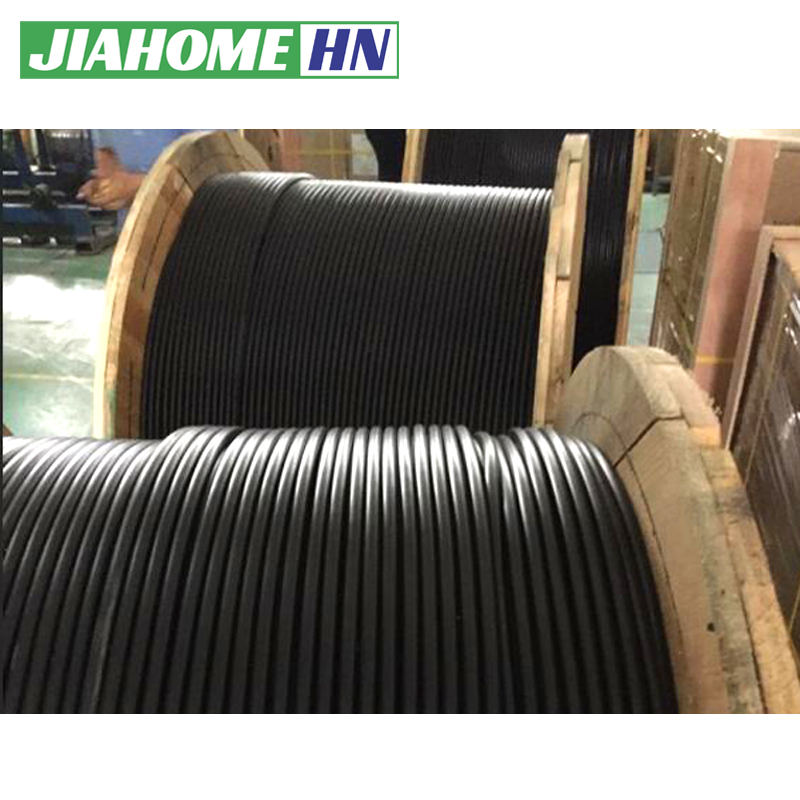GYFTS(Tubo solto de uso geral, jaqueta única, armadura única) é um tipo de cabo de fibra óptica projetado para aplicações externas, principalmente em instalações aéreas e de dutos. Pertence à família dos cabos de fibra óptica de tubo solto, que se caracterizam pela flexibilidade, versatilidade e adequação às diversas condições ambientais. Os cabos GYFTS são amplamente utilizados em redes de telecomunicações, incluindo linhas troncais de longa distância, redes de área metropolitana (MANs) e redes de acesso local (LANs), bem como para aplicações industriais, comerciais e residenciais.
Construção e componentes do cabo GYFTS:Os cabos GYFTS consistem em múltiplas fibras ópticas envoltas em camadas protetoras, incluindo tubos soltos, uma única capa externa e uma bainha blindada. Os principais componentes de um cabo GYFTS incluem:
- Fibras ópticas: Os cabos GYFTS normalmente contêm múltiplas fibras ópticas individuais, que servem como meio para transmissão de sinais de dados na forma de pulsos de luz. Essas fibras são geralmente feitas de vidro de sílica de alta qualidade e estão dispostas em feixes compactos dentro da estrutura do cabo.
- Tubos Soltos: As fibras ópticas ficam alojadas em tubos soltos, que fornecem proteção mecânica e isolamento de fatores ambientais externos. O design de tubo solto permite expansão e contração térmica, reduzindo o risco de danos às fibras devido a flutuações de temperatura.
- Revestimento externo: Uma única camada de revestimento externo durável envolve os tubos soltos, proporcionando proteção adicional contra umidade, abrasão e impacto físico. A capa externa geralmente é feita de polietileno de alta densidade (PEAD) ou outros materiais adequados, oferecendo excelente resistência a fatores ambientais.
- Bainha Blindada: Em alguns cabos GYFTS, especialmente aqueles destinados a instalações externas em ambientes agressivos, uma bainha blindada pode ser incluída para maior proteção contra danos mecânicos, intrusão de roedores e forças externas. A bainha blindada é normalmente feita de aço corrugado ou alumínio, proporcionando blindagem robusta e mantendo a flexibilidade.
Recursos e benefícios do cabo GYFTS:Os cabos GYFTS oferecem vários recursos e benefícios que os tornam adequados para uma ampla gama de aplicações:
- Versatilidade: Os cabos GYFTS são adequados para instalações aéreas e em dutos, oferecendo flexibilidade e adaptabilidade a vários cenários de implantação.
- Alta contagem de fibras: Os cabos GYFTS estão disponíveis com alta contagem de fibras, permitindo a transmissão de grandes volumes de dados em longas distâncias. Isso os torna ideais para redes backbone e aplicações de alta capacidade.
- Construção Durável: Com seu design robusto e camadas protetoras, os cabos GYFTS apresentam excelente resistência a fatores ambientais como umidade, radiação UV, flutuações de temperatura e estresse mecânico.
- Facilidade de instalação: Os cabos GYFTS são projetados para facilitar a instalação, com recursos como construção leve, design flexível e compatibilidade com práticas padrão de instalação de cabos.
- Desempenho confiável: Os cabos GYFTS oferecem desempenho confiável e baixa atenuação de sinal, garantindo transmissão de sinais de dados de alta qualidade com perda mínima.
Aplicações do cabo GYFTS:Os cabos GYFTS são amplamente utilizados em diversas aplicações de telecomunicações e redes, incluindo:
- Redes backbone de longa distância
- Redes metropolitanas (MANs)
- Redes de acesso local (LANs)
- Sistemas de automação e controle industrial
- Sistemas de segurança e vigilância
- Redes de banda larga residenciais e comerciais
Os cabos GYFTS são componentes essenciais na infraestrutura moderna de telecomunicações, oferecendo conectividade de fibra óptica de alto desempenho para uma ampla gama de aplicações. Com a sua construção durável, versatilidade e desempenho fiável, os cabos GYFTS desempenham um papel vital ao permitir a transmissão contínua de dados a longas distâncias, contribuindo para a eficiência e fiabilidade das redes de comunicação em todo o mundo.
Contato para cotação e amostra grátis:inquiry@jiahomeopticable.com
Horário da postagem: 21 de março de 2024


